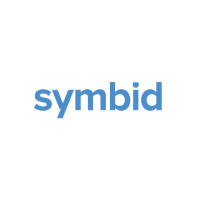Corona Bridging Loans (COL) for start-ups and scale-ups
04-05-2020 | by Rowan Hermes | Symbid
Since Wednesday, April 29, startups, scale-ups and innovative SMEs can apply for a special bridging loan, the Corona Bridging Loan (COL). In this blog we briefly explain what the COL is and what criteria a company must meet in order to claim the COL.
Blog is in Dutch language:
Op verzoek van het kabinet zullen de Regionale Ontwikkelingsmaatschappijen (ROM’s) de COL-regeling uitvoeren. De regeling is opgezet omdat veel startups niet in aanmerking komen voor de Noodmaatregel Overbrugging Werkgelegenheid (NOW), bij banken nauwelijks terecht kunnen en weinig voordeel hebben van de verschillende fiscale maatregelen van het kabinet.
De specifieke doelgroep voor de COL zijn startups, scale-ups en innovatieve mkb’ers die overwegend met extern eigen vermogen gefinancierd zijn. De COL is ook beschikbaar voor ondernemers die de afgelopen jaren groei gefinancierd hebben met intern eigen vermogen, maar zij mogen geen bancaire financieringsrelatie hebben (met uitzondering van een beperkte bancaire rekening-courantverhouding).
De verstrekte leningen zijn een noodinstrument, bedoelt om een tijdelijke overbrugging naar ‘break-even’ of een vervolgronde te verzorgen. Het geld mag niet gebruikt worden om andere leningen af te lossen. De bedragen zullen variëren tussen de € 50.000,- en 2 miljoen euro. Bij bedragen groter dan Є 250.000,- wordt er een cofinanciering van 25 % verwacht van aandeelhouders of andere investeerders. Het rentetarief is uniform 3 %. Aangezien er vaak snelheid gepaard is bij overbruggingskrediet streven de ROM’s ernaar om aanvragen onder de € 500.000,- binnen vier tot negen werkdagen af te handelen. Het streven voor grotere aanvragen is drie werkweken.
De criteria
Je komt met je bedrijf naar alle waarschijnlijkheid in aanmerking voor de COL als je voldoet aan de volgende voorwaarden:
-
Je bedrijf is niet actief in retail, horeca, kleine zakelijke dienstverlening en je bent geen zelfstandig ondernemer.
-
Je kunt een twaalfmaands-liquiditeitsoverzicht voorleggen waaruit de financieringsbehoefte als gevolg van de coronacrisis blijkt en aangeven hoe je de overbruggingslening voor de komende negen maanden aanwendt.
-
Je bedrijf viel op peildatum 31/12/2019 niet in de categorie ‘bedrijven in moeilijkheden’.
-
De lening wordt ingezet voor investeringskosten of werkkapitaal en de financiering voldoet aan de vereisten van het Fresh Money-beginsel.
-
De jaarrekeningen van 2018 en 2019 moeten beschikbaar zijn, net als het budget voor 2020 voor zover mogelijk.
-
Je kunt onderbouwen hoe je geprognosticeerde omzet terugvalt door de coronacrisis. De ROM’s kunnen hier een due diligence onderzoek naar doen.
-
Je moet aangeven welke maatregelen getroffen zijn om kosten te reduceren, waarbij ook het gebruik van andere overheidsmaatregelen meegenomen moeten worden.
-
Er moet redelijke comfort verschaft worden dat na het eerste jaar aflossing plaats kan vinden en de lening binnen drie jaar afgelost kan worden.
Kijk voor meer informatie, een uitgebreide Q&A en specifieke aanleverspecificaties op de website van ROM Nederland.






